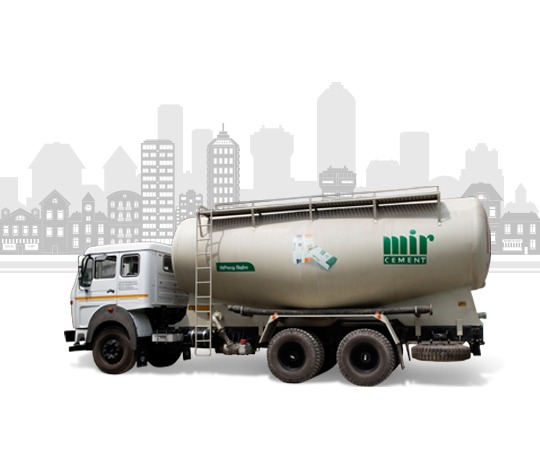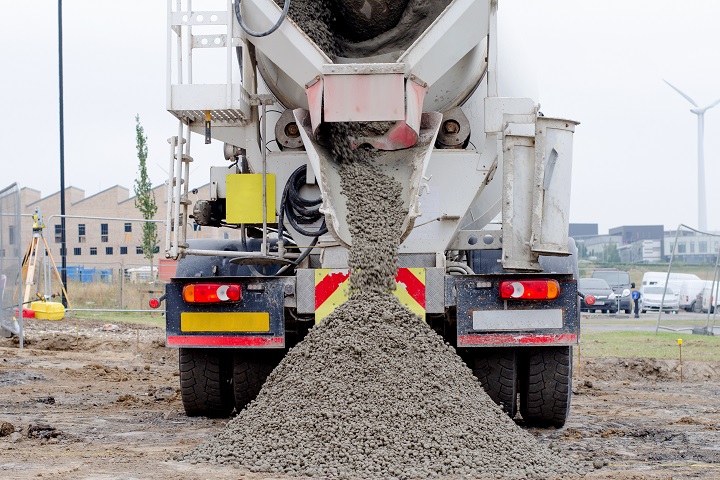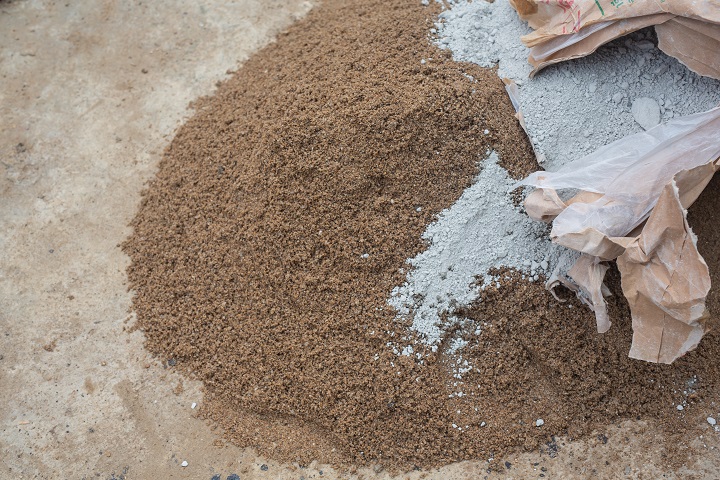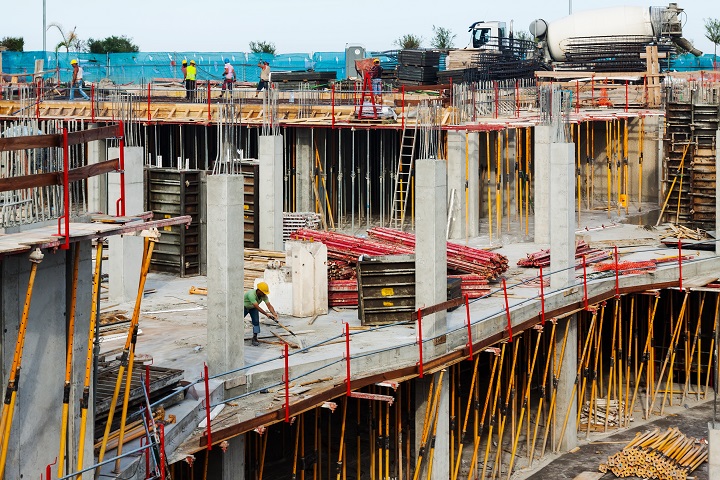Precautions of Transporting Cement Bags in Bangladesh
Cement is a mass-produced product that needs to be transported at large distances. Firstly, bulk cement is transported to nearby storage facilities or 3rd party suppliers. Secondly, the cement needs to be transported to the construction site. The second phase often creates vast challenges when construction sites are far away from cement suppliers. Furthermore, large construction sites require tons of cement on a daily basis. Cement is a sophisticated product and requires extra attention when transporting large distances. Cement cargoes are considered a dry bulk trade that is highly complicated to transport, especially when required in large quantities. Hence, there are many precautions to transporting cement.
Effective and safe transportation guarantees the integrity of the cement and the safety of workers who are involved in the transportation process. The transportation of bulk cement requires specialized cement trailers that can take a large volume of cement. If an expert does not supervise the whole process, the cost can spike, and delays may occur between transportation sessions.
Different Methods of Cement Transportation
Cement is produced in manufacturing plants, usually far from the locality. So, cement must be transferred long distances before reaching the end consumer. There are four primary ways transportation can be carried out:
- Cement bags
- Bulk cement in trailers
- One-ton packaging bags
- Small-packaged cement
Bagged cement is the most common and popular method of transporting cement. It removes the need for mixing stations and storage bins. However, bagged cement can cause dust which is harmful to humans. Furthermore, it increases cost and time as cement is packed in bags and unpacked again in construction sites. Hence, this method has very low efficiency. Although it is helpful in small-scale construction, it will not suffice for extensive construction works.
Bulk cement trailers can carry more than one hundred tons of cement. These trucks carry a tremendous amount of cement directly to construction sites, and cement gets pumped through pipes by compressed air to a cement silo. One of the most significant advantages of this method is that large volumes of cement can be easily transferred to construction sites. One-ton packaging of cement is also preferable in small to medium construction sites. Forklifts and cranes handle these bags. Sometimes the inability to move it without special machinery creates a disadvantage for this method. Small cement bags are handy for limited construction works where consumers require a small amount of cement. These bags are pretty easy to transport and do not require many precautions.
Precautions to Transport Cement
Cement should be handled carefully while transporting. It is a very fine powdery substance that can create a lot of dust and harm the human body. Cement also requires specific conditions to remain operable. Failure to provide a precise environment for cement may render the product useless. So, one should be careful while working with cement, especially while transporting it. Here are some precautions to transport cement:
Solidification of Cement
Cement goes through a hydration reaction which hardens it. So, when cement comes into contact with water, it starts settling. If cement is exposed to water while transporting it, it will undoubtedly get hard and render the product useless. For this reason, all vehicles, containers, or platforms where cement or even cement bags will come into contact must be thoroughly cleaned. All surfaces must be adequately dried before their use for transportation.
So, it is essential to make sure the vehicle and platform to carry cement are free from water and dampness. Checks for leakage signs are an essential precaution before transportation through the barge. If there is any water residue, the cement will start hardening up and become completely useless. It can become a substantial financial burden. Cement is a valuable building material, and cement transportation can play a crucial role, especially when construction sites are far away. All factors should be well-scrutinized to reduce the chances of loss due to transportation.
Contamination
Another primary precaution to transport cement is to check for any contamination source that can threaten the purity and quality of the cement. Sometimes containers have residue from previously transported products. If it is not cleaned correctly, there is a high chance that the cement will get contaminated. There are standard definitions of the level of cleanliness required for the loading of cement in the vessels. It should not contain any foul smell. When cement reacts with raw sugar, its hardening ability gets severely affected even with a small amount. It is advisable to take no chances with this requirement as a bit of contamination can ruin the whole batch of cement according to Oyster Homes.
Powder tank trailers are designed to carry other similar products like cement. Hence, it is crucial to check thoroughly before loading cement into the vessel. It must be cleaned properly so that no residue is left. When cement transportation is done through the barge, it is advisable to seek the help of professionals to clean the barge sufficiently.

Temperature
Cement depreciates very quickly at high temperatures. So, before loading cement into the vessel, it should be made that the temperature does not exceed 90 degrees Celsius. Sometimes, staying under the hot sun can rapidly raise the temperature inside the vessel. So, making sure precautions are taken to avoid such situations is an important task.
Cement remains at a very high temperature soon after leaving the production line. Cement should not be loaded into vehicles at such high temperatures. The temperature should not exceed 100 degrees Celsius because water vapor starts to form and dampen the cement. Before loading the cement into the vessel, Preloading surveys should be held to ensure the temperature remains under a specified range.
Source: Anster
Proper Packaging
Generally, cement is bagged in 50KG bags. If bulk quantities are not required, cement is transported using these 50KG cement bags. It could also be carried in a one-ton polypropylene bag.
Another primary precaution to transport cement is checking the packaging of cement. All packaging should be waterproof because the absorption of moisture and carbon dioxide from the air can severely impact the quality of the cement. Even when there is no clear indication of damage, cement can be affected due to moisture absorption. So, verifying the quality of cement is an essential prerequisite before starting to use it.
Vehicle Condition for Loading and Transportation
Cement is carried in cargo trucks that have large vessels attached to them. When the incoming air is cooler than that of the vessel’s insides, the ambient air cools and turns into a vapor that will condense at some point.
This is another chance for cement solidification. It can cause the cement inside the vessel to harden, eventually losing its properties. It can create a massive loss of cost and the vessel as it would require vigorous cleaning procedures to rub out the hardened cement.
To avoid these situations, the following points must be undertaken.
- The vessel should have sufficient ventilation. A sound ventilation system can reduce the chances of forming vapor inside cargo chambers. However, some other precautions must be followed when the weather has high humidity.
- Large trucks sometimes have fuel tanks underneath the vessel compartments. When trucks travel long distances, the fuel inside the tank can get heated up. This heat is sometimes transferred to the whole cargo. High temperature is one of the biggest foes of cement. So, precautionary measures should be taken to reduce heat inside the vessel. Otherwise, the cement inside can get damaged easily.
This issue can be avoided by communicating with the engine department, and they should be informed what kind of commodity is being planned to be transported. They can help regarding the consequences of any engine or fuel tank overheating. Precautions can be taken by using certified chemicals on the cement holds before loading. These chemicals can protect the cement from any subsequent cleaning procedures that may be applied.
General Precautions to Transport Cement Bags
From small to medium construction sites, cement bags are the usual method of transporting types of cement. Many types of vehicles carry these bags to construction sites. Cement bags are made to protect the cement inside from outside pollutants. You should check for some points before purchasing cement bags and make sure they are transported according to guidelines. There are some rules on how cement bags should be handled in transportation.
- After selecting the cement transporting vehicle, ensure the loading area is adequately cleaned. Remove any sharp objects, protruding screws, and steel parts before loading cement bags, as they can puncture the bags. Another precautionary measure is to ensure the platform where cement bags will be placed is completely dry. Even if there is a small amount of dampness, the cement will start hardening and lose its properties and quality.
- Loading cement bags into the vehicle is a crucial task. Most of the cement loss occurs at the loading and unloading of cement. Please make sure the bags are covered to be protected from a sudden burst of rain and tied down to the vehicle in a secure manner. Stack the cement bags in the same way, to be placed uniformly. Sometimes potholes in roads can cause the vehicle to shake up and down. Transportation poses a significant threat in Bangladesh as many roads are not smooth enough for vehicles. Potholes and speed breakers are prevalent. So, extra care should be taken while tying down the bags.
- Workers should never drop the cement bags from the top of the vehicles. Impact on cement bags can tear it apart, making the cement completely useless. Sometimes workers use hooks while transporting cement bags from the vehicles. Hooks can make the process much easier, but it is unsafe for the cement. Any leaks in bags expose it to the outside moisture, damaging the cement.
- It is a common practice in Bangladesh to overload the carrying capacity. This is an unsafe practice as it can damage the vehicle and reduce its maneuverability of the vehicle. This can increase the time and cost of transportation. It increases the chances of accidents which are extremely dangerous for everyone. So, make sure cement bags are loaded in the vehicle in accordance with local rules.
- If there is a chance of rain or fog while transporting, the cement bags should be stacked on pallets on the truck’s bed. It should be tightly covered so that no rainwater can enter. The cement bags should not rest directly upon a moist truck deck. A waterproof canvas should be placed beneath the bags. Furthermore, all precautionary measures should be taken to prevent wetting the cement bags from any water splashes. Tarpaulin sheets are not fully waterproof, and water can seep through them if it collects on the top. So, it is recommended that good quality plastic sheets cover the cement. After that, the second layer of the tarpaulin sheet can be used to provide more rigidity to the system.
What is the Best Time for Transporting Cement?
Water is the biggest concern when dealing with cement. Any dampness or wetting can ruin a whole batch of cement. So, it is advisable to avoid cement transportation in the monsoon season. This issue is a primary concern in Bangladesh as it sees a lot of rainfall during the monsoon season. Cement can be stored ahead or after the monsoon season if a good storage facility is available on the construction site. Furthermore, avoid bad weather conditions by checking weather forecasts as a precautionary measure. If cement must be transported during rainfall for some reason, make sure the cement bags are well protected against rainwater.
Summary
Using good quality cement ensures the durability and longevity of your construction project. After spending a lot on purchasing good quality cement, spending a little extra for safeguarding cement during transportation will bring the best results. Many bags of cement get ruined in transportation due to poor management and not following proper transportation guidelines. Following the discussed precautions to transport cement can save everyone a lot of cost and time. Therefore, it is crucial to adhere to the rules and seek professional guidelines.
Frequently Asked Questions (FAQs)
What is a cement truck?
Ans: Cement trucks are also known as concrete trucks. They have a big drum-shaped vessel on the top of the truck that can hold concrete. They spin and have sharp blades inside to prevent concrete from hardening.
How can cement get damaged?
Ans: Cement can get ruined due to exposure to water and high temperatures.
What is the best way of moving cement bags manually or transportation?
Ans: Of course with the help of transportation.
Which is the best vehicle for transporting cement?
Ans: You can transport cement on any vehicle as long as you take precautions to transport cement by following specific guidelines.
What to do if cement gets exposed to water during transportation?
Ans: There is nothing to do once the cement is exposed to water. That portion of cement is regarded as waste.







